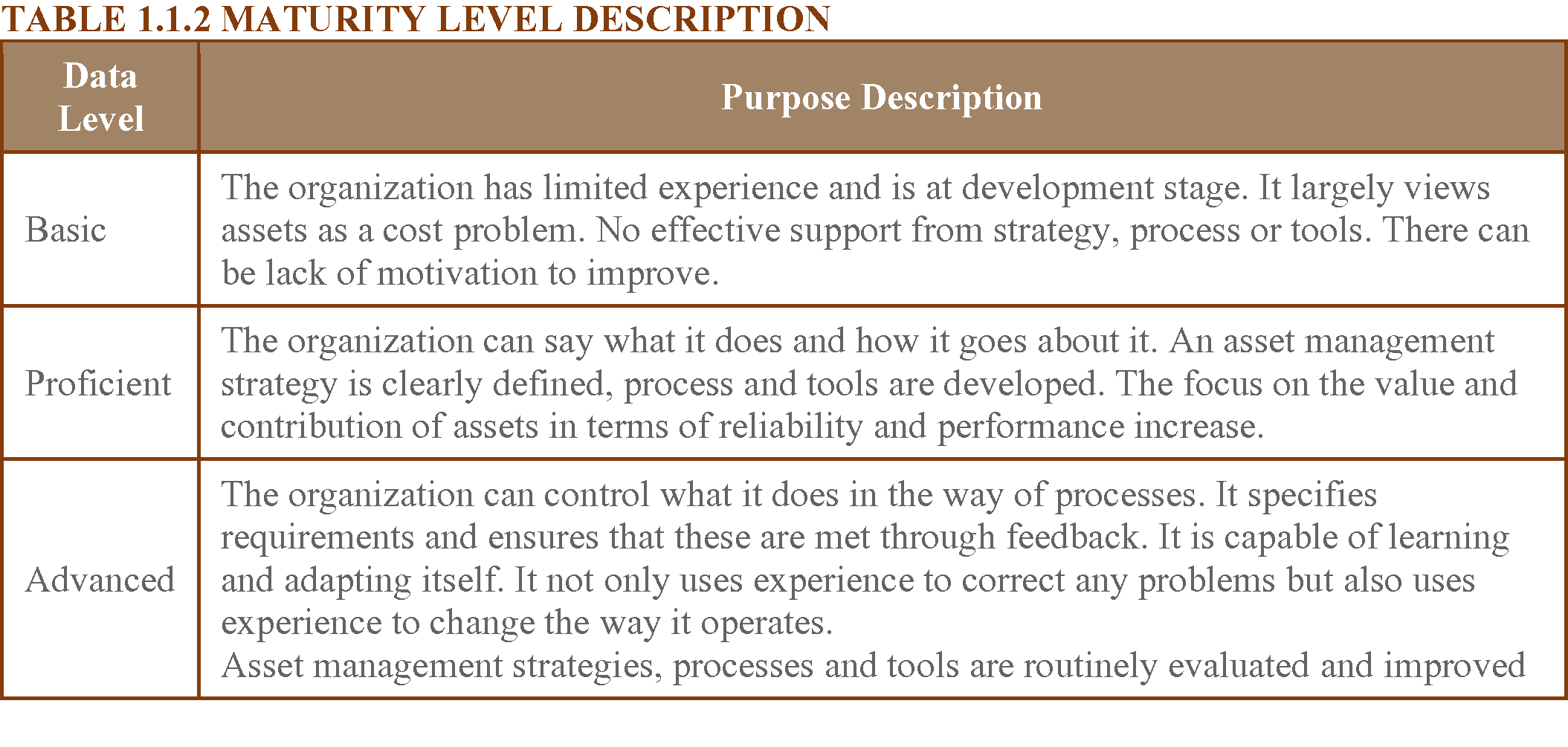
Asset Management Manual
A guide for practitioners!

Asset Management Manual
A guide for practitioners!
No matter the size of the road organization, its inventory, or the information and data it has concerning its assets, asset condition and network, the road organization should get started with the information it has.
Step 1: Establish the asset management goals and objectives that align with the agency’s mission, desired outcomes and business strategy. If the road organization does not have a written mission that identifies desired outcomes and a business strategy, this should be developed and shared with stakeholders. It is important to set goals and objectives outside of individual asset classes in order to obtain the broader perspective from stakeholders, including elected officials and the public. (For example, the goal for pavement condition involves those responsible for pavements, but the goals of the condition are developed or supported by politicians and the public.) Getting started, questions to ask may include the following:
Step 2: Undertake a self-assessment and gap analysis to determine the road organization current position across a range of asset management practices and then prioritize areas that need to be addressed to meet the desired position. The most basic self-assessment can be based on the five core questions above; more complex questions pertaining to data, analysis and the use and availability of this information can also be addressed. This information can be used to prioritize weak areas that need to be addressed.
Step 3: Scope the specific improvement actions. It is important to take a holistic view of how asset management relates to the organization’s mission and strategy. Key issues to be addressed include identifying the scope of assets to be included, the framework for decision making, internal business processes, capabilities, data needs and benefits and costs. Road organizations need to look at the way they do business and undertake a self-assessment and gap analysis to assess where they are and what they need to do to better manage their network. This may be a need for additional data, or better sharing of the data, or enhancing processes within the organization. Questions to ask are the following:
Maturity models
The measurements of the degree to which organizations have implemented asset management principles can support organizations in identifying their strengths and weaknesses in relation to their intended goals.
Maturity models can be viewed as a set of structured guidelines that describe how different domains or expert fields of an organization are able to contribute to a set of predetermined organizational outcomes (Volker et al., 2011).
A clear and repeatable definition of the maturity levels is essential for the whole assessment procedure. It is strongly recommended to use a unified scale or categorization within the whole road organization because this enables the managers to benchmark the different asset management sectors and their processes. Of course, the number of categories and the scales should be in coincidence with already existing successful assessment procedures. The referenced literature (e.g. AASHTO, ISO 55000) introduces a 5- to 6-level scale/classification, which requires detailed information about the different processes. Not all road organizations will be able to collect and assess the necessary information. Thus, and as a starting point a minimum of 3 maturity levels should be used.
This Manual introduces a matrix to measure the maturity level of an asset management organization, which offers 3 maturity levels for the following asset management dimensions: management (organization, strategies and performance), data and modelling (inventory, monitoring, risk and lifecycle planning), planning (management and financial plan, asset evaluation and programming) and application (management tools and communication). The maturity levels are described briefly in the following table 1.1.2 while the following section includes a more detailed description of each dimension.

The 3 maturity levels of this manual can be extended easily subject to the availability of necessary input information.